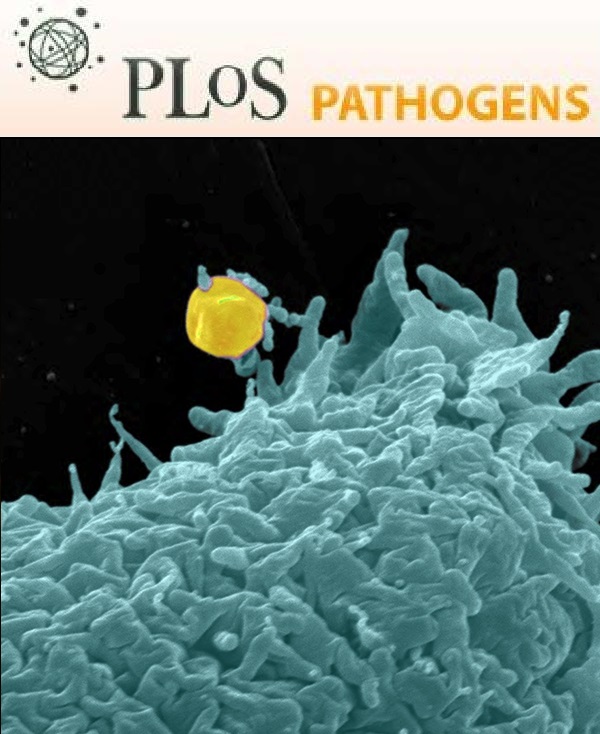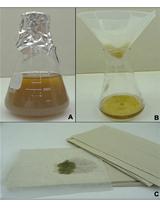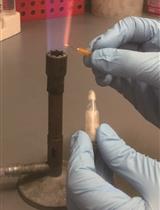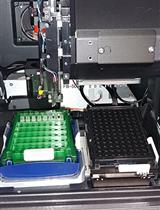- EN - English
- CN - 中文
ChIP-Seq in Candida albicans
白色念珠菌的染色质免疫共沉淀测序(ChIP-Seq)
发布: 2014年06月20日第4卷第12期 DOI: 10.21769/BioProtoc.1158 浏览次数: 19073
评审: Fanglian HeAnonymous reviewer(s)
Abstract
Systems biology approaches can be used to study the regulatory interactions occurring between many components of the biological system at the whole-genome level and decipher the circuitries implicated in the regulation of cellular processes, including those imparting virulence to opportunistic fungi. Candida albicans (C. albicans) is a leading human fungal pathogen. It undergoes morphological switching between a budding yeast form and an elongated multicellular hyphal form. This transition is required for C. albicans’ ability to cause disease and is regulated through highly interconnected regulatory interactions between transcription factors (TFs) and target genes. The chromatin immunoprecipitation (ChIP)-High-throughput sequencing (Seq) technology (ChIP-Seq) is a powerful approach for decoding transcriptional regulatory networks. This protocol was optimized for the preparation of ChIP DNA from filamenting C. albicans cells followed by high-throughput sequencing to identify the targets of TFs that regulate the yeast-to-hyphae transition.
Materials and Reagents
- C. albicans strains expressing or not a functional epitope-tagged transcription factor grown under filamentation-inducing conditions in liquid medium [50 ml, e.g. Lee’s medium at 37 °C (Lee et al., 1075)]
- 37% formaldehyde (Sigma-Aldrich, catalog number: F8775 )
- Liquid nitrogen
- Dynabeads® Pan Mouse IgG (5 ml) (Life Technologies, catalog number: 11041 )
- Appropriate mouse monoclonal antibody directed against the epitope tag fused to TF [e.g. mouse monoclonal anti-HA antibody, HA-probe Antibody (F-7), Santa Cruz, catalog number: sc-7392 ]
- 100 mM Phenylmethylsulfonyl fluoride (PMSF) dissolved in isopropanol (100x stock solution)
- DNase-free RNase A solution (10 mg/ml) (Thermo Fisher Scientific, catalog number: EN0531 )
- Bovine Serum Albumin (BSA) (Sigma-Aldrich, catalog number: B4287 )
- Proteinase K solution (20 mg/ml) (Life Technologies, catalog number: AM2546 )
- Glycogen (20 mg/ml) (Thermo Fisher Scientific, catalog number: FERR0561 )
- Phenol: Chloroform: Isoamyl alcohol (25: 24: 1) (Sigma-Aldrich, catalog number: P2069 )
- 5 M NaCl solution
- 70%, 100% freezer-cold Ethanol
- Quant-iTTM PicoGreen® dsDNA Assay Kit (Life Technologies, catalog number: P11496 )
- TruSeqTM DNA Sample Preparation Kit v.2 (Illumina, catalog numbers: FC-121-2001 , FC-121-2002 )
- TruSeqTM DNA Sample Preparation Guide v.2 (Illumina, catalog number: FC-930-1021)
- QIAquick PCR Purification Kit (QIAGEN, catalog number: 28104 )
- MinElute PCR Purification Kit (QIAGEN, catalog number: 28004 )
- E-Gel® iBaseTM and E-Gel® Safe ImagerTM Combo Kit (Life Technologies, catalog number: G6465 )
- 2% E-Gel® SizeSelectTM Agarose Gels (Life Technologies, catalog number: G6610-02 )
- Glycine (Sigma-Aldrich, catalog number: 50046 )
- SDS (Sigma-aldrich, catalog number: L3771 )
- 2.5 M glycine (see Recipes)
- 10% SDS (see Recipes)
- Lee’s medium (see Recipes)
- TBS buffer (see Recipes)
- Lysis buffer (see Recipes)
- PBS/0.5% BSA (see Recipes)
- Wash buffer (see Recipes)
- Protease inhibitor cocktail tablets (Roche Diagnostics, catalog number: 11697498001 ) (see Recipes)
- TE solution (see Recipes)
- TE/SDS solution (see Recipes)
Equipment
- 15 ml, 50 ml Falcon tubes
- Racks, including a 50-ml Falcon tube rack (Unwire test tube rack, for 30 mm tubes; holds 24) (Thermo Fisher Scientific, Nalgene®, catalog number: 14-809-30 )
- VSR-50 laboratory platform rocker (Pro Scientific, catalog number: PSI-512000-00 ) or equivalent
- Waste container
- 1.5 ml screw-cap tubes
- 0.5 ml PCR tube
- FastPrep®-24 instrument (MP Biomedicals, catalog number: 116004500 )
- Microscope (e.g. Zeiss Axiostar Plus)
- 18 G x 1½ inch needles (BD Biosciences, catalog number: 305196 )
- 2 ml Eppendorf conical tubes (Eppendorf, catalog number: 022363352 )
- Probe sonicator (e.g. MSE Soniprep 150 Plus, exponential microprobe, end diameter 3 mm) [MSE (UK), catalog number: 38121-114A ]
- Glass beads (0.5 mm diameter) (Bio Spec Products, catalog number: 11079105 )
- Hematology/chemistry mixer 346 (Thermo Fisher Scientific, catalog number: 14-059-346 )
- DynaMag Spin magnet system (Life Technologies, model: 123-20D )
- Fluorescence reader (e.g. Tecan Trading AG, Infinite®, model: M200 )
- BioAnalyzer 2100 (Agilent)
- HiSeq 2000 sequencer (Illumina)
Software
- Galaxy NGS data analysis software (https://main.g2.bx.psu.edu/)
- ChIP-Seq (MACS) peak-finding algorithm software (http://liulab.dfci.harvard.edu/MACS/)
Procedure
文章信息
版权信息
© 2014 The Authors; exclusive licensee Bio-protocol LLC.
如何引用
Readers should cite both the Bio-protocol article and the original research article where this protocol was used:
- Znaidi, S., Proux, C., Weber, S., Drouin, S., Robert, F., Raymond, M., Coppée, J. and d’Enfert, C. (2014). ChIP-Seq in Candida albicans. Bio-protocol 4(12): e1158. DOI: 10.21769/BioProtoc.1158.
- Znaidi, S., Nesseir, A., Chauvel, M., Rossignol, T. and d'Enfert, C. (2013). A comprehensive functional portrait of two heat shock factor-type transcriptional regulators involved in Candida albicans morphogenesis and virulence. PLoS Pathog 9(8): e1003519.
分类
系统生物学 > 基因组学 > 染色质免疫共沉淀测序(ChIP-seq)
微生物学 > 微生物生物化学 > 蛋白质 > 相互作用
生物化学 > 蛋白质 > 免疫检测 > 染色质免疫共沉淀(ChIP)
您对这篇实验方法有问题吗?
在此处发布您的问题,我们将邀请本文作者来回答。同时,我们会将您的问题发布到Bio-protocol Exchange,以便寻求社区成员的帮助。
Share
Bluesky
X
Copy link












